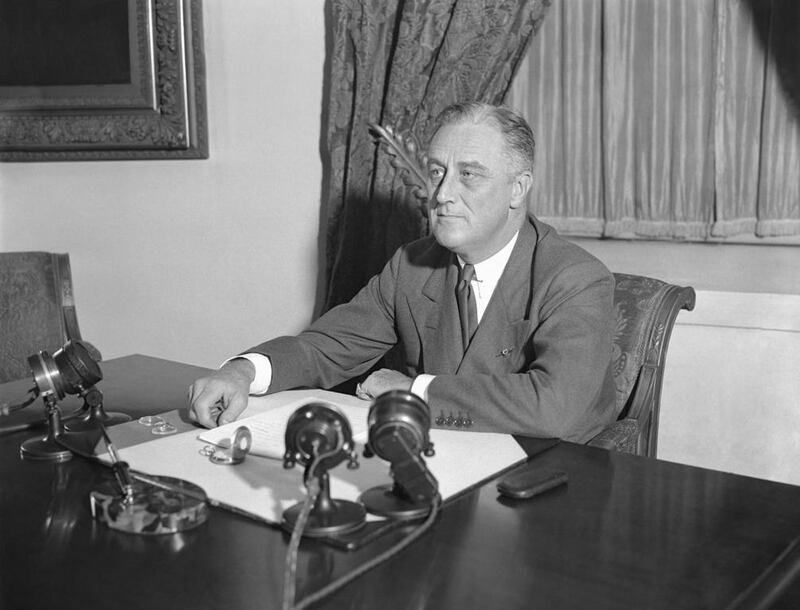What is “Trumponomics”?
Donald Trump’s electoral success is partially attributable to the portfolio of economic policies he espoused during the US presidential campaign.
One should place limited emphasis on Mr Trump’s economic manifesto until at least a couple of years into his presidential term. Nevertheless, his stated policy positions regarding the economy have exhibited sufficient consistency to warrant further examination of their intellectual antecedents and their expected consequences.
Trumponomics has three primary components. The first is a combination of lower taxes and higher spending. The lower taxes are marketed as an effort to incentivise production and consumption – a classic liberalisation argument that goes back to the 18th century Scottish economist Adam Smith, and that was more recently popularised during the 1980s by the former US president Ronald Reagan and the former UK prime minister Margaret Thatcher. The higher spending is associated with the 20th century British economist John Maynard Keynes, especially his emphasis on infrastructure spending, which was applied by the former US president Franklin Roosevelt during the New Deal of the 1930s.
Although lower taxes and higher spending are individually tried and tested, it is quite rare to see them simultaneously, except as temporary measures designed to stimulate an economy in recession. In contrast, the US economy is performing well and Mr Trump is pitching his left-wing-right-wing concoction as a long-term policy, giving it novelty, although it is unclear how he can reconcile it with his desire to diminish the public debt.
Trumponomics’ second component can be described as a politicised form of neo-mercantilism. The original mercantilism was a post-medieval group of policies that emphasised strengthening economic activity within a nation’s borders to the greatest extent possible. The main tools of mercantilism were tariffs on imported goods, the promotion of exports and military expansionism (especially colonialism) in an effort to aggrandise the state’s economic locus. In Mr Trump’s version, he has already walked the walk, by withdrawing from the Trans-Pacific Partnership, and he has indicated a desire to rework the North Atlantic Free Trade Agreement to diminish US imports from Mexico.
His insistence that he will build a wall across the Mexico-US border – and that Mexico will pay for it – is an example of how the policy is as much about politics as it is about economics. In terms of its core, isolationist components, Mr Trump’s economic nationalism agenda is a path well-trodden, most notably in the aftermath of the Great Depression during the 1930s when trade barriers were erected and governments devalued their currencies to boost exports. The fact that such policies contributed to the outbreak of the Second World War should be a cause for concern among all global citizens at present.
The third component of Trumponomics is pro-energyism, or anti-environmentalism, depending on one’s preferred frame. Again, this is an area where Mr Trump has already taken significant steps, most notably authorising the Keystone oil pipeline, and the construction of the North Dakota pipeline. He has also declared his intention to deregulate energy production, especially coal, in an effort to boost domestic energy production and the downstream manufacturing sector for its own sake; and as part of an effort to decrease dependence upon energy imports, as a hybrid national security/economic isolationism strategy. Mr Trump’s energy deregulation is part of a broader deregulation strategy, which includes health policy, and can be considered a second tip of the hat to Reagan. However, the anti-environmentalist part of the policy bundle is necessarily new, as pro-environmental policies are a recent feature of the economic landscape.
It is worth emphasising that many of the policies are unlikely to see the light of day. The US political system places considerable constraints upon the president, especially policies that require funding, such as medical reform or border security. Mr Trump is a political outsider, meaning that he has not built the relationships necessary to garner congressional support for his policies. Moreover, being an outsider makes him inexperienced – and therefore ineffective – in formulating feasible policies and in acquiring the requisite support. His public spats with large numbers of high-ranking Republicans during his election campaign constitute an additional barrier.
The policies that are most likely to be realised are his infrastructure spending and pro-energy policies, most of which are designed to give a short-term boost to the economy. Much of that is likely to be negated by the Federal Reserve, which has signalled a desire to raise interest rates.
While there remains a degree of controversy over whether developing economies might benefit from transitionary periods of high tariffs, the same cannot be said of mature, leading economies such as the United States. Instead, these policies may backfire. Unless Mr Trump figures how to tame Congress, the debate over his policies’ effectiveness will be academic.
Omar Al Ubaydli is the programme director for international and geopolitical studies at the Bahrain Center for Strategic, International and Energy Studies, and an affiliated associate professor of economics at George Mason University. He welcomes economics questions from readers via email (omar@omar.ec) or tweet (@omareconomics).
business@thenational.ae
Follow The National's Business section on Twitter






